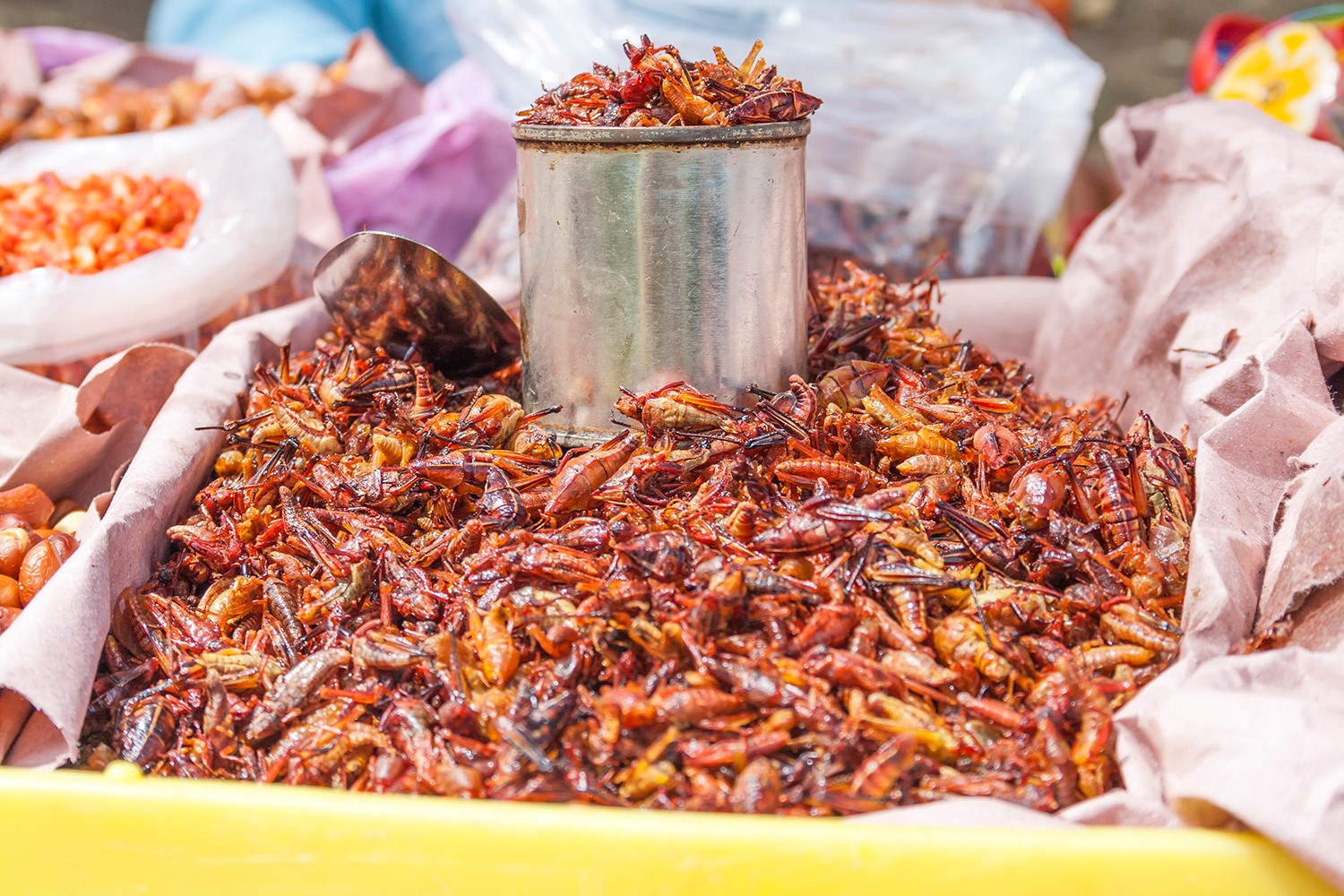
Credit: Jan Harenburg, via Wikimedia Commons
Lobsters used to be considered the “cockroach of the sea,” food fit only for indentured servants and prisoners. My, how times have changed.
Could the same change be coming for crickets?
Today, nearly 40 percent of habitable land is used to raise livestock and their feed.
By 2050, the UN projects global population will increase by two billion people—people who will need protein in their diet. There may not be enough real estate to produce today’s livestock for them.
For the same amount of protein, farming insects requires 5 times less feed, 15 times less land and 50 times less water than beef—and produces 80 times less methane!
Insects grow quickly, in days instead of months or years, produce huge numbers of offspring, and can be farmed vertically, like produce.
In fact, raising insects may have less environmental impact than many crops!
They can be fed organic waste. And their waste can then be used as fertilizer.
And they’re good for you. Insects are rich in amino acids, vitamins and minerals. Flour made from ground crickets has more iron than spinach and more calcium than milk.
The UN has catalogued 1,900 species of edible insects—and there are already two billion people who eat them: dried grasshoppers in Mexico, fried grubs in Africa, and roasted insects of all kinds in Asia.
Once we get a taste for them, they may wriggle their way into many more diets.
Background
Synopsis: By 2050, Earth’s population will grow from 8 billion today to 9.7 billion people. Creating environmentally sustainable food security with 20% more people on the planet in just 30 years will become one of the world’s most pressing challenges—especially given fertilizer shortages related to energy challenges. Today, two billion humans regularly consume edible insects in more than 80 nations as a source of high-quality protein and nutrients. Insects are typically roasted and consumed whole or ground and incorporated into food products. The logical use of insect-based feed for farmed fish and poultry is also increasing, improving sustainability for these products.
- To feed Earth’s future population, production of protein in the form of livestock, poultry and fish may be insufficient, so insects may become an important superfood for our diet.
- By 2050, the UN estimates that the population of Earth will reach 9.7 billion people—that means for every four people on earth today there will be a fifth.
- According to the World Health Organization, in 2021, as many as 828 million people were affected by hunger, representing 9.8% of Earth’s population, and it will be higher this year, given the energy crisis impacting fertilizers and agriculture.
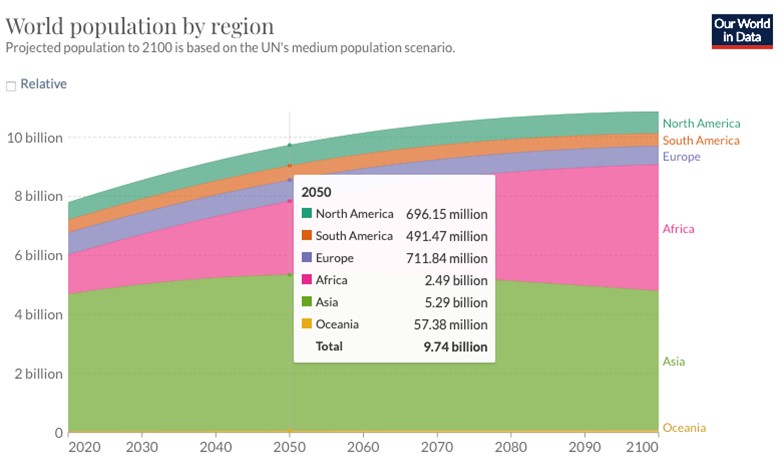
United Nations estimate of population growth by region through 2100.
Credit: Our World in Data
- Currently, half of Earth’s habitable land is used for agriculture, the other half is covered in oxygen-producing and carbon-sequestering forests and shrublands.
- About 77% of agricultural land is dedicated to livestock grazing and feed production, while the rest produces plant-based food for human consumption.
- Livestock supplies only 37% of the global supply of protein and 18% of calories, making it an inefficient source of nutrition in a land-limited world.
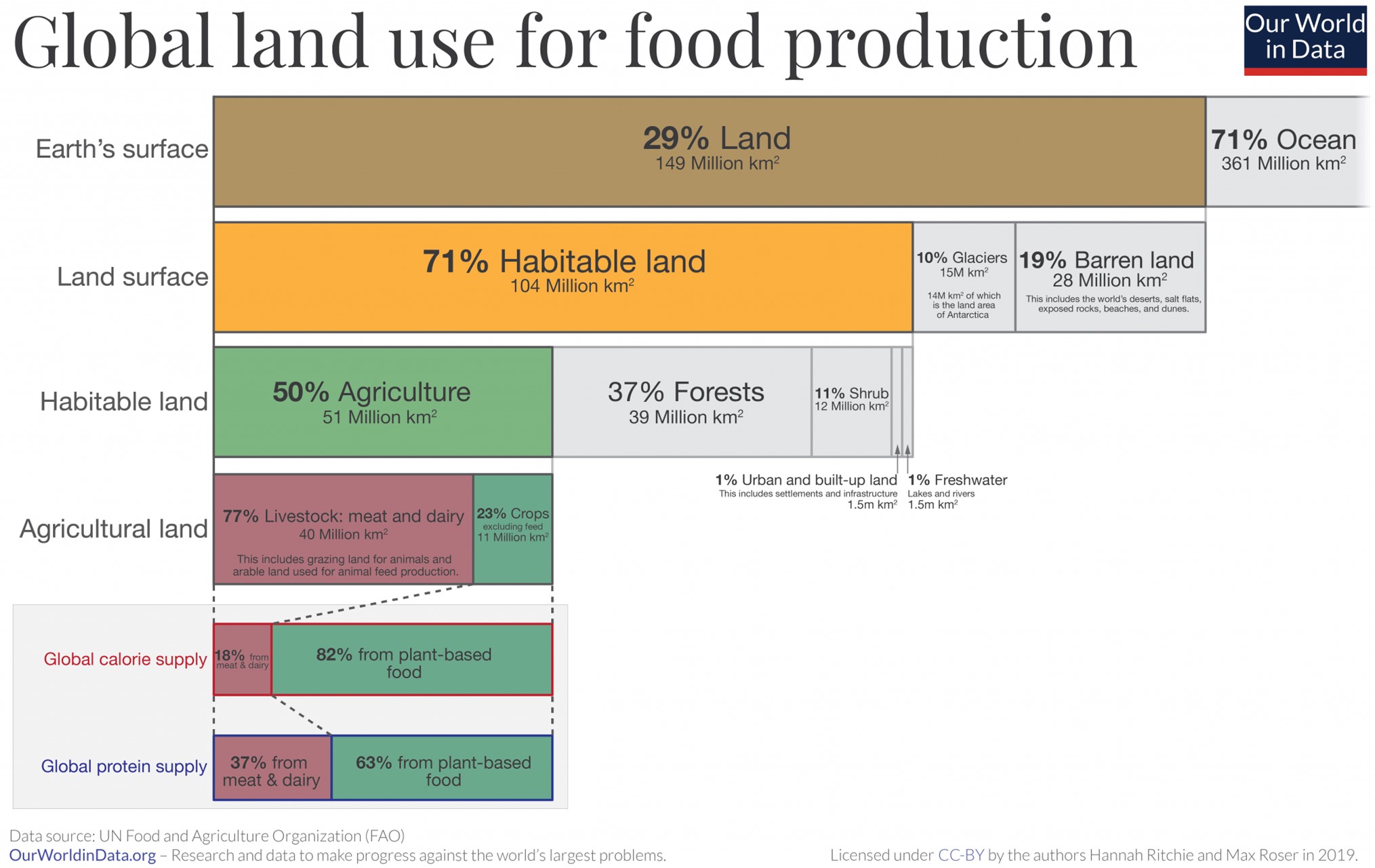
Credit: Our World in Data - For the same amount of protein, beef requires 5 times the land that poultry utilizes and 14 times the land needed to farm insects. Beef also requires 3.3 times as much water as poultry and 56 times as much as crickets.
- Humans have eaten nutrition-dense insect eggs, larvae, pupae and adults since prehistoric times.
- Known as anthropo-entomophagy, it is common today in more than 3,000 ethnic groups in Central and South America, Africa, Asia, Australia and New Zealand.
- The Food and Agriculture Organization (FAO) of the United Nations has registered 1,900 edible insect species including certain beetles, caterpillars, bees, wasps, ants, grasshoppers, locusts, crickets, cicadas and others.
- Today, more than two billion human insectivores live in 80% of the world’s nations.
- In Southeast Asia, roasted insects are a delicacy. Nutty tasting grubs are high in protein, phosphorous and calcium.
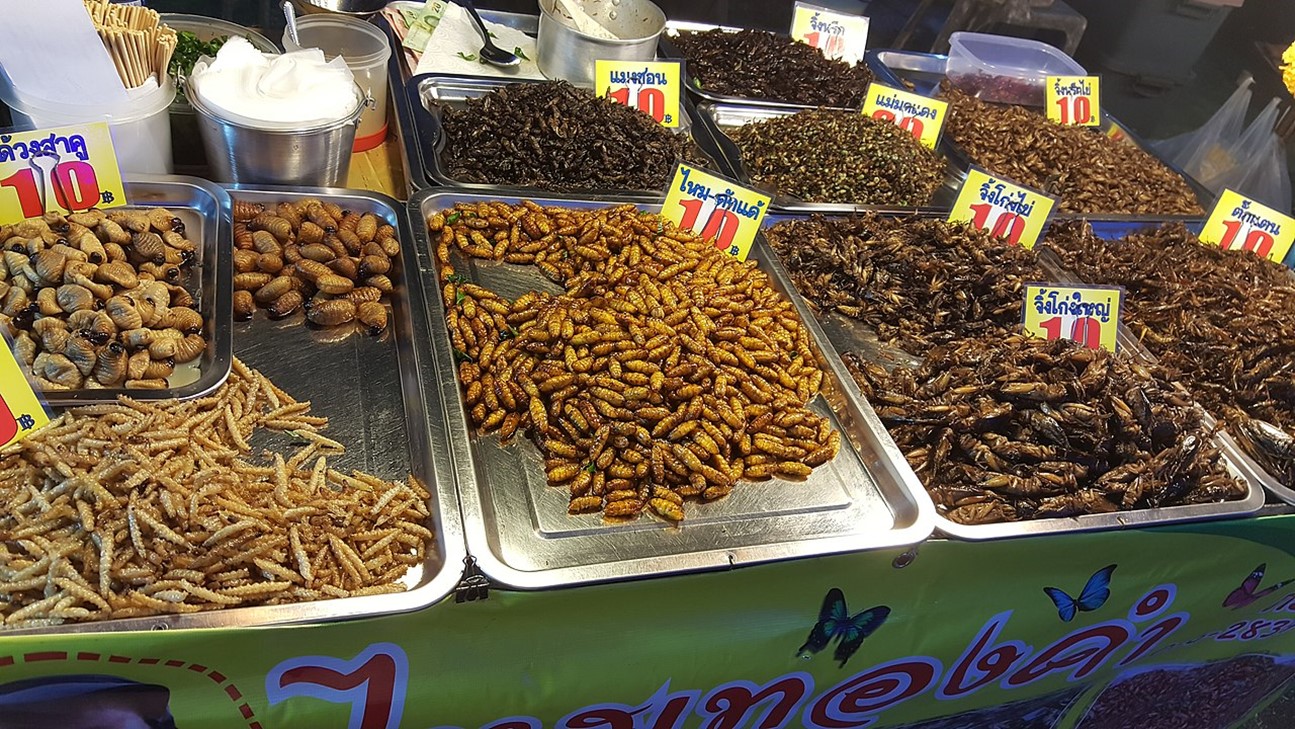
Roasted insects sold in a food stall at an open market in Thailand.
Credit: Jnpet, via Wikimedia Commons - Toasted, salted ants are a treat in South America.
- In Africa, beetles, caterpillars and locusts are tasty tidbits.
- Yellow mealworms are increasingly showing up in Mexican tortilla flour, increasing the protein content and essential amino acids of this staple food.
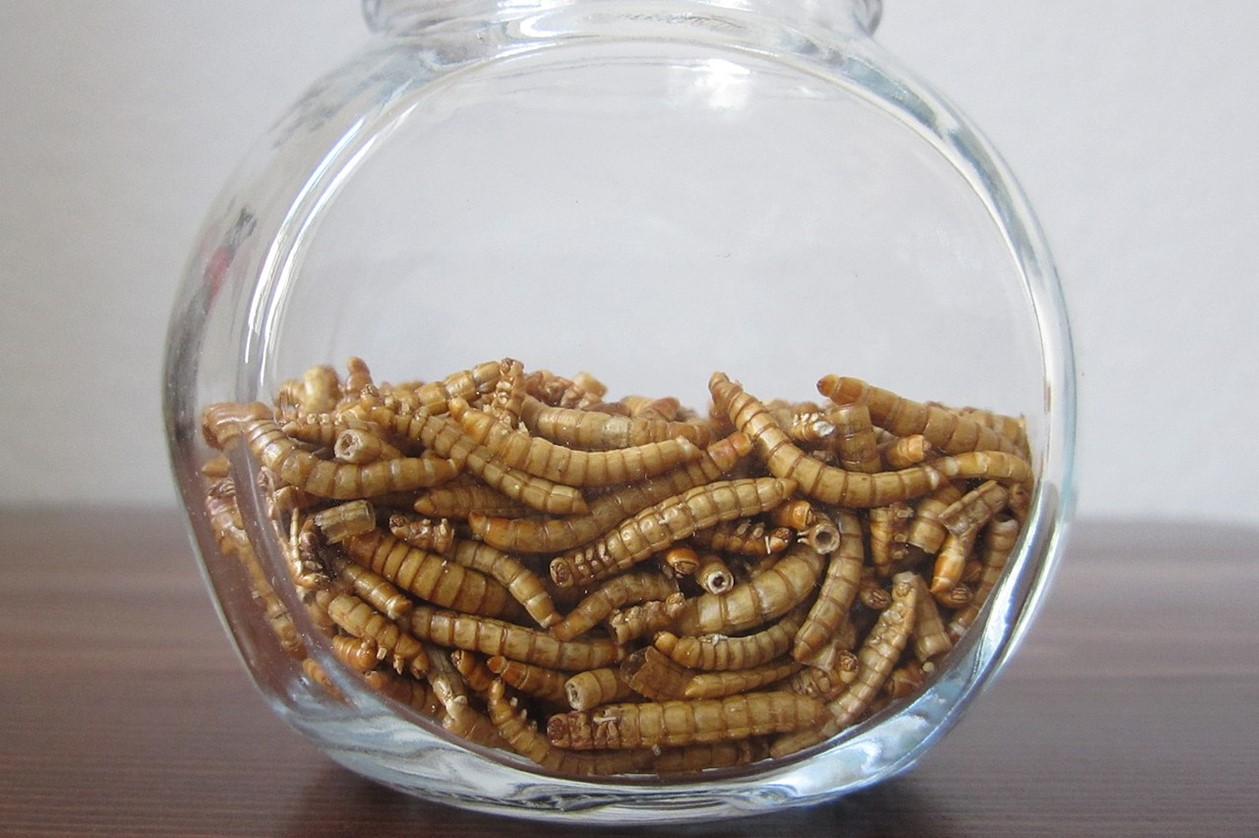
Freeze-dried mealworms as food (edible insects) or food ingredient. Mealworms are the larvae of the mealworm beetle (Tenebrio molitor) that may be served whole or ground into nutrient-rich flour.
Credit: Wilhelm Thomas Fiege / insektenwirtschaft.de, via Wikimedia Commons - But in North America and Europe, eating bugs is uncommon, and some insects may even be taboo for certain religions. Only 10% of Europeans would consider replacing meat consumption with insect consumption.
- In Southeast Asia, roasted insects are a delicacy. Nutty tasting grubs are high in protein, phosphorous and calcium.
- Edible insects are high in protein, amino acids, fat, minerals, vitamins and fiber, making them an important future hedge against famine, as demonstrated by the NIH.
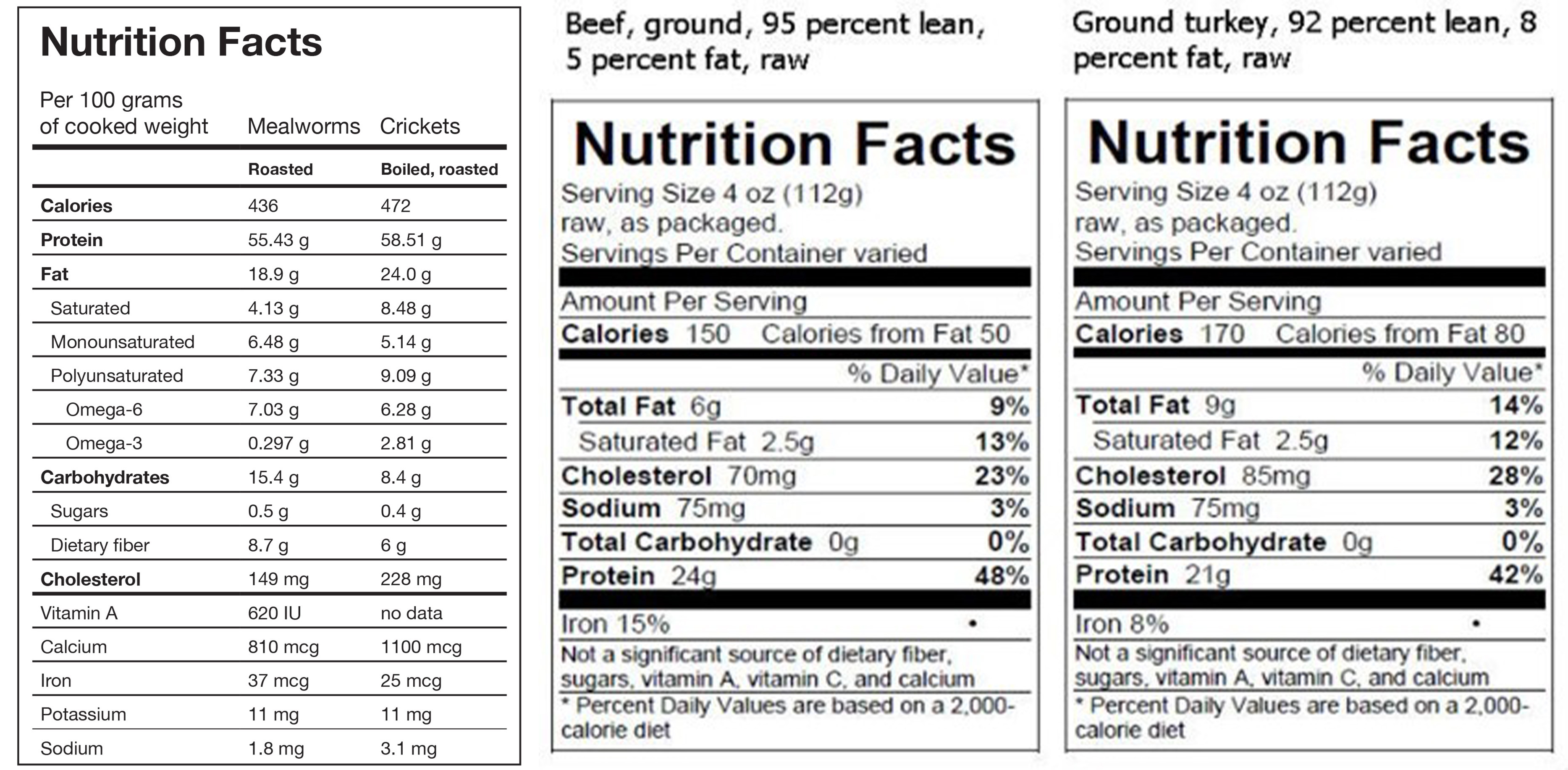
Mealworms and crickets are higher in calories, protein and fat than beef or turkey.
Credit: Precision Nutrition- Crickets contain nine essential amino acids, vitamin B12, and minerals like iron, zinc, magnesium sodium and calcium.
- Flour made of ground crickets contains more iron than spinach and more calcium than milk.
- Edible insect farming is a lucrative business, with a global market of more than $1.5 billion in 2021.
- Insects grow quickly, in days as opposed to months for livestock, and produce lots of offspring.
- Insects are 12 to 25% more efficient than animals at converting feed into body mass, because they are cold blooded so don’t expend energy to maintain body heat. For the same amount of protein, crickets require six times less feed than beef and half the feed of poultry.
- Like produce, insects can be farmed vertically in urban population centers, a benefit with 68% of Earth’s population expected to be living in cities in 2050.
- Insect crops can be grown on organic side streams transforming waste into high protein feed, and their waste can be used to fertilize produce crops.
- The UN FAO estimates that 14.5% of anthropogenic greenhouse gas emissions come from rearing livestock. Crickets produce 80 times less methane than cows.
- Insect farming has less environmental impact than farming many plants.
- Food scientists and entrepreneurs are working to introduce tasty food options that incorporate insect protein to the Western world. For people to choose insect protein they need choices that are as delicious to them as other sources of protein.
- In North America and Europe, the most practical short-term option for incorporating insect protein into our diets is to grind them into powders to fortify processed foods like protein bars, or to use them like flour in breads, pastas, smoothies and desserts.
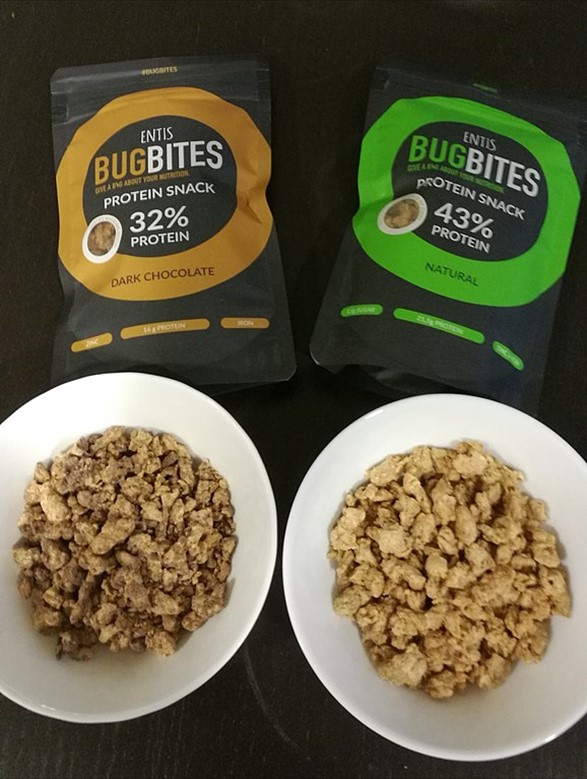
Oat snacks made with cultivated cricket flour.
Credit: Antti30, via Wikimedia Commons - Consuming nutty tasting insects whole may gain traction with traditional international foods or with salt-roasted crickets at happy hour.
- Westerners do consume animals that consume insects. In addition to poultry farms, more than half the fish consumed globally are farmed. Increasing insect protein in poultry and fish feed is a natural solution because insects are their natural food source.
- In North America and Europe, the most practical short-term option for incorporating insect protein into our diets is to grind them into powders to fortify processed foods like protein bars, or to use them like flour in breads, pastas, smoothies and desserts.
- Food trends and culture can change like they did with lobster over the past 400 years.
- In the seventeenth century, colonists in New England considered lobster to be undesirable because this bottom-feeding “cockroach of the sea” washed up in piles on the beach. It was used as fishing bait and livestock feed.
- In the 1830’s, Boston baked beans cost nearly five times as much as lobster per pound (11 cents). Lobster was stigmatized as food for the poor and was served to indentured servants and prisoners, limited to no more than two to three times per week.
- Seasonal tourism in the 1870’s led to post-vacation cravings for lobster, transforming the crustacean into luxury food.
- Now lobster costs more than 100 times as much per pound as it did in Victorian times (canned baked beans are only about twice as expensive).

